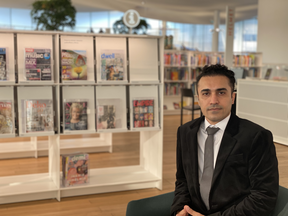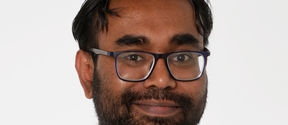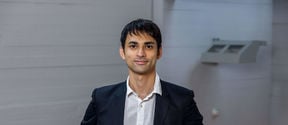‘Research allows you to pursue your interests, to learn something new, to broaden your mind and to challenge yourself in new ways’

How did you end up choosing the career as a researcher? What did you study in your Master’s?
I did my master’s degree in Mechanical Engineering- Energy Conversion. I did my master thesis on heat transfer modeling of oscillating heat pipes for nanofluids and ferrofluids. I found out that research allows you to pursue your interests, to learn something new, to broaden your mind and to challenge yourself in new ways. The work is hard, and the standards are rigorous, but most researchers agree that their work is rewarding, so you will enjoy what you do. I received my Ph.D. degree in Energy and Sustainability and discovered my passion for the research and development of engineering problems in broad energy engineering, renewable resources and artificial intelligence (AI) fields of research.
What is the field of your research and what is your research about?
I am working on creating system-level solutions for the current sustainable energy transition undergoing in Finland. My expertise is in using energy engineering and artificial intelligence to model energy systems that are carbon neutral and affordable. My current projects are: Energy System Modeling for Nordic and Baltic Countries; Energy Harvesting and Sustainable Light Pole Network Concept: the Lux5G Light Poles; Developing AI Model to Predict Hydropower Production in the Nordic Power Market.
What has been the best part of working as a researcher?
I would like to say a quote from Maryam Mirzakhani, Iranian mathematician who became the first woman to be awarded a Fields Medal:
“Of course, the most rewarding part is the "Aha" moment, the excitement of discovery and enjoyment of understanding something new – the feeling of being on top of a hill and having a clear view. But most of the time, doing mathematics for me is like being on a long hike with no trail and no end in sight”.
How is your regular day at work as a researcher?
I start the day off by checking my emails. This way, I can get everything organized at the start of the day. I then open my Notion program and look over my weekly agenda and to-do list and get started on the projects that have my top priority. I find that I am most creative in the morning, which is why I like to write codes, develop methods, and do simulations. After lunch, I start to work on the other aspects of the research such as data gathering, draft preparation, learning new skills, meetings, courses, etc.
What are your plans for the future?
Deployment of increasing amounts of renewable energy presents certain grid integration challenges for the bulk power system. In the future, one of my goals is to continue developing technology to support flexibility in the context of high penetrations of renewables such as improved forecasting, balancing area expansion, storage technologies and flexible generation.
What tips would you give to other young researchers, who want to make their research visible?
Professor Ali Khademhosseini, the Director and CEO of the Terasaki Institute and former Professor at Harvard University, says, “Right now the big breakthroughs come at the interfaces between these established disciplines”. The first step is choosing field of research. My suggestions are artificial intelligence, synthetic biology, blockchain and renewable energy. The next step is identifying the specific topics within your field that generate a high level of interest. This can help to attract future collaborators and in turn increase visibility and impact. International collaborations can be particularly valuable. Present research findings at conferences and, where appropriate, at international congresses. Attending such events also provides opportunities for networking and developing new collaborations. Use social media and networks to promote your research and reach a wider audience. This can include an audience beyond your own discipline. Examples include LinkedIn, ResearchGate, Google Scholar, Academia.edu and Twitter.
For what kind of students would you recommend researcher career?
It depends on you that to what extent you are involved or interested in any sort of research. Research can be done at various levels and can even be pursued as a career option. It has a very tremendous scope provided your research is a very unique one and can definitely benefit the society. The whole of the science, technology and everything else are based on research. These are the results of the tremendous efforts put by the researchers. So, I think research and development is the best career choice one can make, if he/she has the resources, perseverance and passion to overcome challenges.
https://ecebm.com/2021/10/26/stanford-university-names-worlds-top-2-scientists-2021/
- Published:
- Updated:
Read more news

Broadband miniaturized spectrometer research receives QTF annual discovery award 2024
The clarity and compelling presentation of the research were one of the reasons why Doctoral Researcher Md Uddin earned the prize for the research paper, which was published in Nature Communications.
Robotics needs safe behavior patterns
Robotics and autonomous systems are developing rapidly. Algorithms that withstand disturbances and uncertainties in the system model and environment are critical for development.